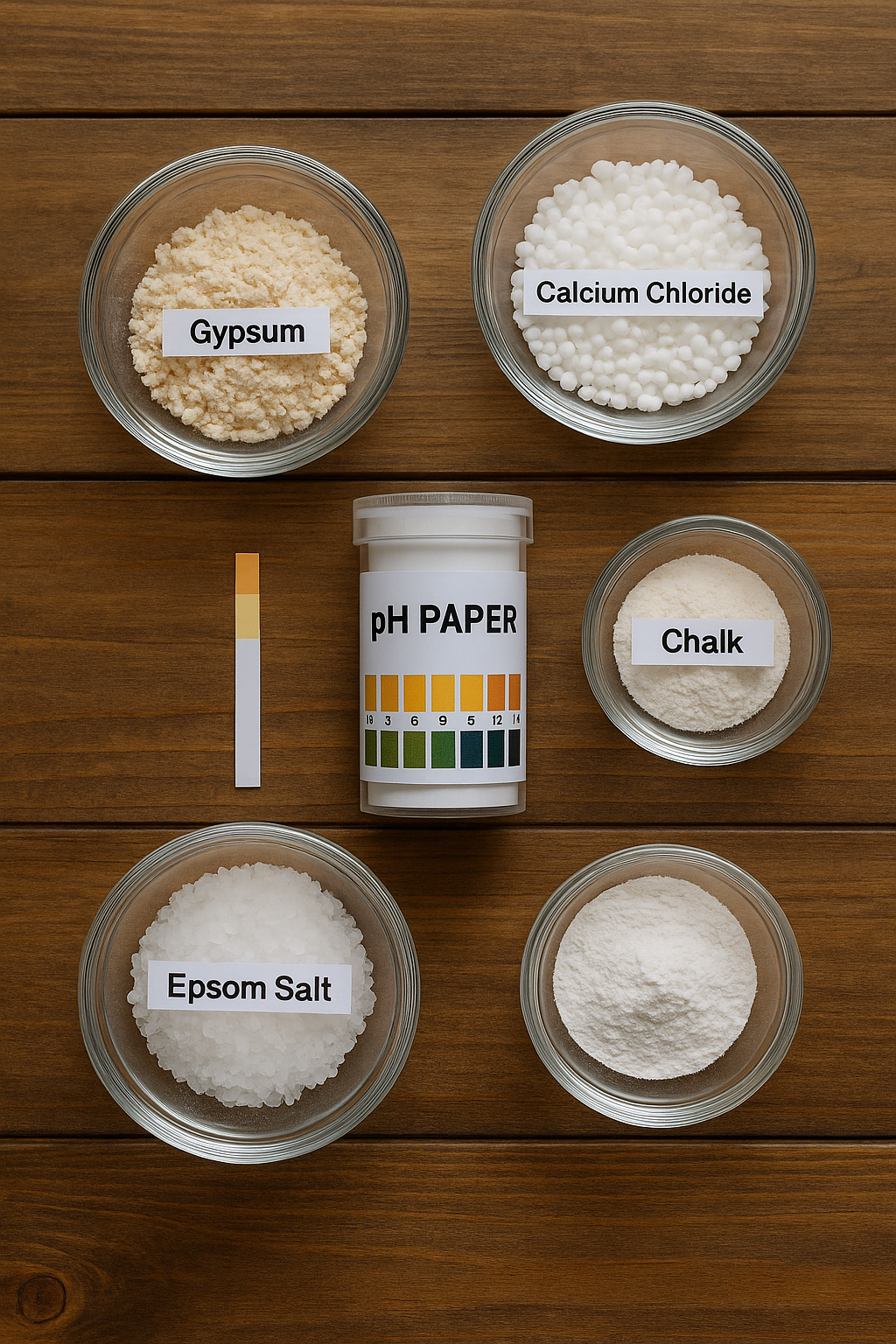The Brewer’s Secret Ingredient

When people think about brewing great beer, they often focus on hops, malt, and yeast. But there’s another ingredient that makes up more than 90% of your brew — water. Understanding and treating your brewing water is one of the most powerful ways to improve your beer’s flavor, balance, and consistency.
Why Water Matters in Brewing
Different beer styles evolved in different regions largely because of local water profiles. For example:
- Burton-on-Trent (UK) has sulfate-rich water, ideal for crisp, hoppy pale ales.
- Dublin’s water is high in bicarbonate, perfect for dark stouts.
- Pilsen (Czech Republic) has very soft water, giving its lagers a delicate flavor.
Your tap water may not match any of these classic profiles — but the good news is that with simple adjustments, you can make it fit the style you’re brewing.
Step 1: Know Your Water
Start by getting a water report from your local utility or testing it yourself with a brewing water test kit. The key factors you’ll want to know include:
- Calcium (Ca) – Helps yeast flocculate and stabilizes mash enzymes.
- Magnesium (Mg) – Adds a touch of bitterness; yeast nutrient in small amounts.
- Sodium (Na) – Enhances sweetness and fullness.
- Sulfate (SO₄) – Accentuates hop bitterness and crispness.
- Chloride (Cl) – Rounds out malt flavor and gives body.
- Bicarbonate (HCO₃) – Affects mash pH and dark beer balance.
Step 2: Remove What You Don’t Want
Before adding anything, make sure to remove undesirable elements:
- Chlorine or Chloramine – These disinfectants can create off-flavors. Use a Campden tablet (potassium metabisulfite) or an activated carbon filter to neutralize them.
- Iron or Manganese – Even trace amounts can cause metallic or harsh flavors. If present, use a sediment or iron filter.

Step 3: Adjust Your Mineral Profile
Once your water is clean, you can add brewing salts to shape the flavor:
- Gypsum (Calcium Sulfate) – Boosts calcium and sulfate; great for IPAs and hoppy beers.
- Calcium Chloride – Enhances malt character and smoothness.
- Epsom Salt (Magnesium Sulfate) – Adds magnesium and sulfate; use sparingly.
- Baking Soda (Sodium Bicarbonate) – Raises mash pH; helpful for dark beers.
- Chalk (Calcium Carbonate) – Adds calcium and bicarbonate; not very soluble, so use carefully.
Tools like Bru’n Water or BeerSmith’s water calculator can help you fine-tune additions for your style.
Step 4: Monitor Mash pH
A good mash pH (around 5.2–5.6) ensures optimal enzyme activity and clean fermentation. Use pH strips or a digital meter to measure your mash and adjust with acid malt, lactic acid, or baking soda as needed.
Step 5: Match Water to Beer Style
Here’s a quick reference for typical water profiles and how they affect flavor balance:
| Beer Style | Sulfate:Chloride Ratio | Notes |
| Pale Ales / IPAs | High sulfate (2:1 or more) | Enhances hop bitterness and dryness |
| Malty Ales / Porters | Higher chloride (1:2) | Enhances sweetness, body, and malt richness |
| Lagers / Pilsners | Balanced or soft | Maintains delicate flavor and smooth finish |
| Wheat Beers (e.g., Hefeweizen) | Balanced to slightly chloride-heavy (1:1–1:1.5) | Accentuates smoothness and yeast character |
| Stouts | Slightly higher chloride (1:1.5–1:2) | Softens roast bitterness and rounds out dark malt flavors |
| Belgian Ales (e.g., Tripel, Dubbel) | Balanced (1:1) | Keeps yeast-driven flavors clean and expressive |
Step 6: Keep Records
Like any part of the brewing process, consistency is key. Record your water adjustments, pH readings, and results. Over time, you’ll learn how your local water interacts with each recipe.
Final Thoughts
Treating your water might sound like an advanced step, but it’s the difference between good beer and great beer. With a few simple tools and some basic chemistry, you can unlock the full potential of your ingredients — one glass at a time.
